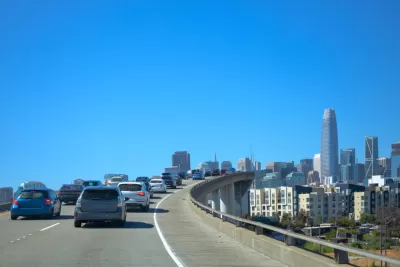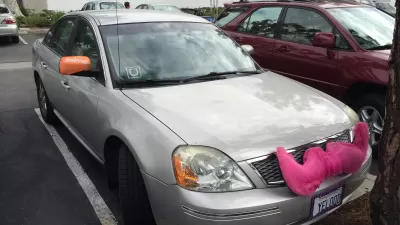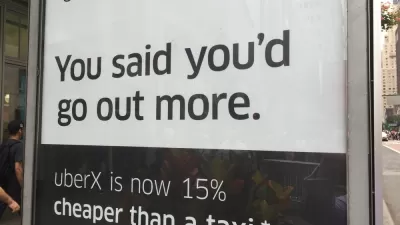A pair of new studies add to an emerging scientific model of the effect of transportation network companies like Uber and Lyft. The complication: One study reinforces earlier findings, and the other contradicts.

A new study by the San Francisco County Transportation Authority takes inventory of San Francisco's traffic volumes, specifically as the first study of the effect of transportation network companies (also referred to as ride-hailing companies) in the city.
"The gist is that while ride-hailing companies have contributed to the increase in traffic congestion in San Francisco, jobs and population growth also play a major role," according to an article by Megan Rose Dickey sharing the findings of the analysis.
That might be a charitable portrayal, however, of the effect of transportation network companies. The figures for the impact of transportation network companies between 2010 and 2016, as reported by Dickey:
- 51 percent of the increase in daily vehicle hours of delay
- 47 percent of the increase in vehicle miles traveled
- 55 percent of the average speed decline
- 25 percent of total vehicle congestion citywide
That's more than a significant impact on traffic, and one that reflects the findings of an earlier study in Seattle.
Another recently released study, however, complicates the picture of Uber-and-Lyft-driven congestion. A study published recently in the Journal of Urban Economics finds that Uber has increased the use of public transit by as much as five percent, with results varying by the size of the metropolitan area. Those findings directly contradict earlier studies that found evidence of transportation network companies cannibalizing rides from public transit agencies.
FULL STORY: Uber and Lyft are responsible for about half of SF’s rise in traffic since 2010, SFCTA says

Maui's Vacation Rental Debate Turns Ugly
Verbal attacks, misinformation campaigns and fistfights plague a high-stakes debate to convert thousands of vacation rentals into long-term housing.

Planetizen Federal Action Tracker
A weekly monitor of how Trump’s orders and actions are impacting planners and planning in America.

In Urban Planning, AI Prompting Could be the New Design Thinking
Creativity has long been key to great urban design. What if we see AI as our new creative partner?

California Creates Housing-Focused Agency
Previously, the state’s housing and homelessness programs fell under a grabbag department that also regulates the alcohol industry, car mechanics, and horse racing.

Chicago’s Ghost Rails
Just beneath the surface of the modern city lie the remnants of its expansive early 20th-century streetcar system.

Baker Creek Pavilion: Blending Nature and Architecture in Knoxville
Knoxville’s urban wilderness planning initiative unveils the "Baker Creek Pavilion" to increase the city's access to green spaces.
Urban Design for Planners 1: Software Tools
This six-course series explores essential urban design concepts using open source software and equips planners with the tools they need to participate fully in the urban design process.
Planning for Universal Design
Learn the tools for implementing Universal Design in planning regulations.
planning NEXT
Appalachian Highlands Housing Partners
Mpact (founded as Rail~Volution)
City of Camden Redevelopment Agency
City of Astoria
City of Portland
City of Laramie





























